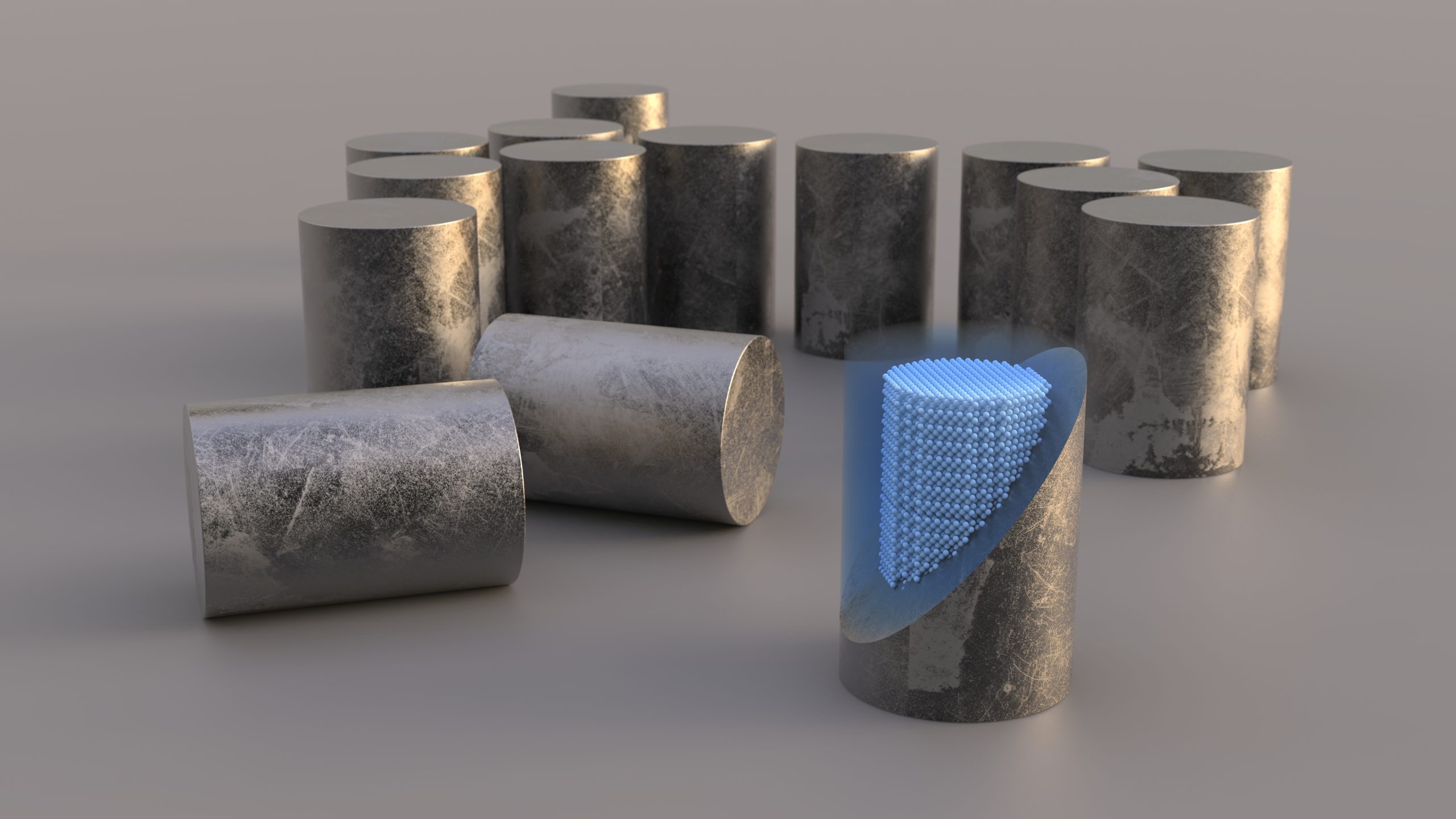The Ultra Safe Nuclear Corporation (USNC) has adopted two 3D printers from Desktop Metal’s recently updated line of X-Series binder jet systems.
The machines, which are capable of printing advanced materials like silicon carbide, will be key to facilitating innovative fuel designs for use in a new generation of advanced nuclear reactors.
“Binder jetting is a low-cost, high-yield, reliable process for our complex serial production,” said Dr. Kurt Terrani, Executive Vice President of USNC’s Core Division. “The advanced material capability of the X-Series machines is fundamental to our innovative approach to fuel design.”

USNC’s additive manufacturing adoption
USNC is a global leader in the development of microreactors and nuclear power technologies, and has demonstrated a growing commitment to the adoption of 3D printing since the start of the year.
In January, the firm announced it had licensed ORNL’s novel method to 3D print components for nuclear reactors using Silicon Carbide and other refractory metals. The technology combines binder jet 3D printing with a chemical vapor infiltration process that enables complex reactor components to be fabricated more efficiently than traditional methods.
Just last week, USNC revealed plans to locate its pilot fuel manufacturing (PFM) operations at an 8.7-acre site situated in close proximity to ORNL in Oak Ridge, Tennessee, in a bid to ramp up the development of advanced nuclear fuel solutions, including the use of 3D printing. The plant is expected to be operational this summer and will see USNC and ORNL continue to work closely together on commercializing ORNL’s additive manufacturing technology and establish an advanced nuclear fuel supply chain.
Nuclear energy is one form of “clean” energy generation that is receiving increasing attention as an alternative to burning fossil fuels, and according to ORNL professors Kathy McCarthy and Xin Sun, 3D printed nuclear components are already having an impact within this field. You can read more on 3D Printing Industry’s interview series on 3D printing and renewable energy here.

Leveraging the X-Series
At the end of 2021, Desktop Metal expanded its binder jetting portfolio with the $575 million acquisition of ExOne. As part of the acquisition, some of ExOne’s systems have been rebranded as the ‘X-Series’, namely its InnoventX, X25Pro and X160Pro.
The X-Series is powered by ExOne’s patented Triple ACT advanced compaction technology for dispensing, spreading and compacting powders during the binder jet process. This enables a wide range of powders to be bound together and enables the printer to process metals and ceramics, such as silicon carbide, for the fabrication of functional, precision parts.
Silicon carbide is a technical ceramic material with excellent environmental stability that is often used in aerospace, armor, plasma shield, and high-temperature applications.
USNC has adopted two systems from the X-Series to enhance its capabilities in transforming nuclear silicon carbide into shapes that can safely surround a nuclear fuel particle, a key element of its Fully Ceramic Micro-encapsulated (FCM) fuel innovation technology. The approach is used to fuel USNC’s micro modular reactor (MMR) energy systems, which are known for their reliability and safety.
“Ultra Safe Nuclear is on the bleeding edge of nuclear fuel and reactor design, pioneering new advances in safety and performance,” Terrani said. “Powering up a new generation of microreactors represents a watershed moment in zero-carbon energy production in the US and worldwide.”
Explaining how the FCM and MMR systems work in tandem, Terrani added: “We’ve created a design for a passively safe reactor, so you don’t need a concrete dome, exclusion zone, or big water reservoir because it’s inherently safe. We’re leveraging a high-temperature resistant fuel with multiple inherent barriers to radiation release at the center of our reactor system. That’s the essence of the Ultra Safe Nuclear approach.”

The small-format InnoventX is already installed at USNC’s facility in Salt Lake City, Utah, and the firm has been working to scale up its next-generation nuclear fuel matrix on the larger X25Pro and X160Pro systems.
“There was a whole host of additive manufacturing methods out there, but a large portion of those rely on a high-temperature process during deposition,” Terrani said. “With metals, they’re melting the particles to connect them together, but you can’t do that with the high melting point of silicon carbide. Binder jet technology is unique because it really relies on the physical characteristics of the power, and it’s essentially highly agnostic to the chemical and phase structure of the material.
“So, we can select highly pure, highly crystalline carbide feedstock powder, nuclear grade powder, and then form these really complex geometries, and that just wasn’t previously possible.”
In addition to the two new X-Series systems, USNC will add two more machines later this year in order to further scale its nuclear fuel design capabilities.
“Driving mass adoption of additive manufacturing requires scalable systems capable of printing high-performance materials that enable the most innovative applications,” said Ric Fulop, Co-founder and CEO of Desktop Metal.
“We’re proud to support the mission of USNC with flexible binder jetting technology that takes customers all the way to production and helps play a role in solving global-scale problems with additive manufacturing solutions.”
Subscribe to the 3D Printing Industry newsletter for the latest news in additive manufacturing. You can also stay connected by following us on Twitter and liking us on Facebook.
Looking for a career in additive manufacturing? Visit 3D Printing Jobs for a selection of roles in the industry.
Subscribe to our YouTube channel for the latest 3D printing video shorts, reviews and webinar replays.
Featured image shows USNC’s Fully Ceramic Micro-encapsulated fuel innovation. Photo via Desktop Metal.



